
An international air waybill is a critical document that accompanies a shipment of goods when it's transported by air. It's essentially a contract between the shipper and the airline.
The air waybill serves as proof of the shipment's ownership and liability. It's usually prepared by the shipper and must include specific details.
A standard air waybill typically includes the shipper's and consignee's names and addresses, as well as a description of the goods being transported. It also lists the weight and volume of the shipment.
The airline will use the air waybill to track the shipment and ensure it's delivered to the correct destination.
What is a Waybill?
A waybill is essentially a document that accompanies your shipment, providing detailed information about the goods being transported. An air waybill, or AWB, is a type of waybill specifically designed for international air courier shipments.
An air waybill has multiple copies, which is useful because each party involved in the shipment can document it. This helps keep everyone on the same page and reduces the risk of errors or misunderstandings.
A waybill serves a similar function to an ocean bill of lading, but it's issued in non-negotiable form, which means there's less protection for the shipper compared to a bill of lading.
AWB Basics
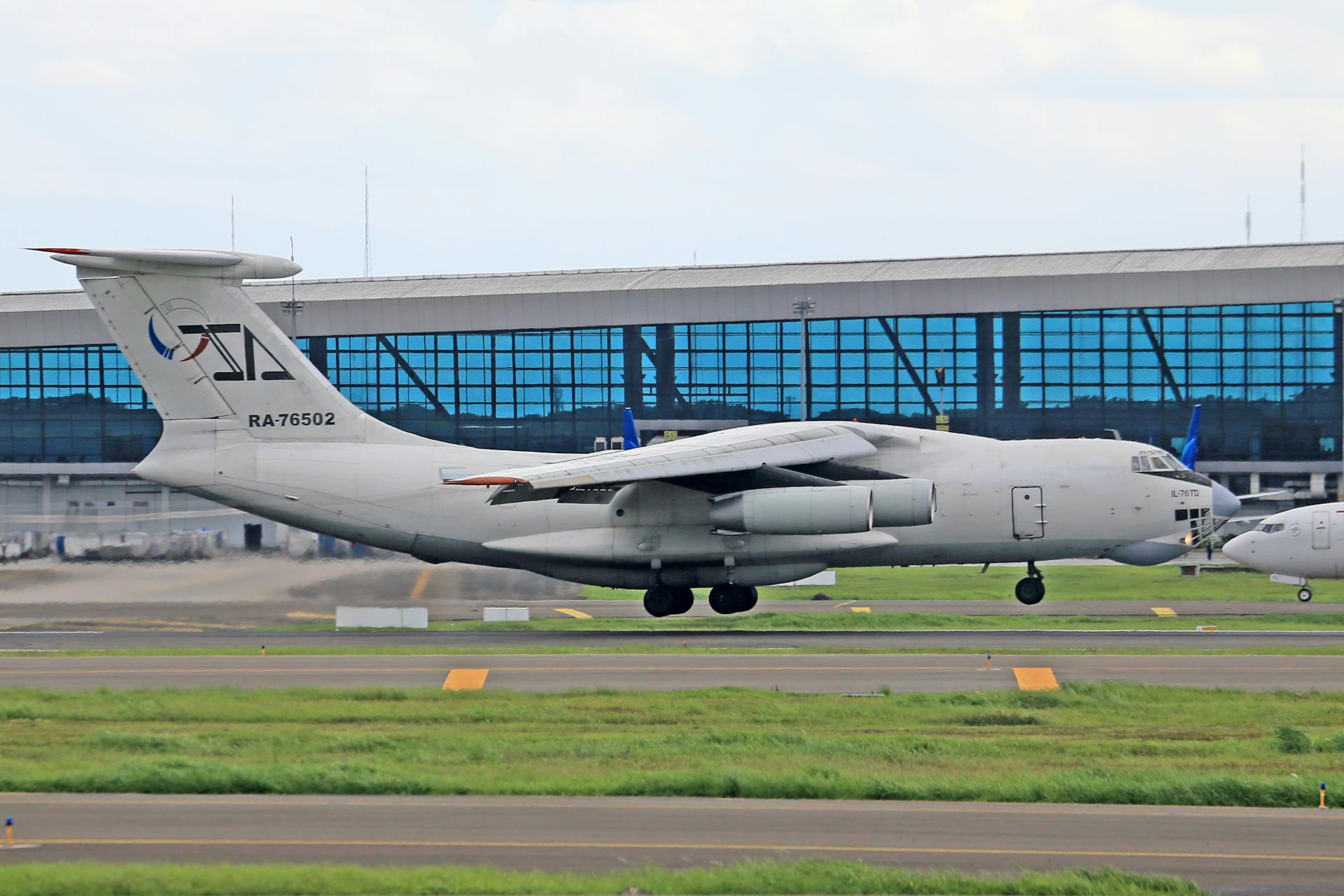
An air waybill (AWB) is a legal agreement that serves as a receipt of goods by an airline and a contract of carriage between the shipper and the carrier. It's a non-negotiable transport document that covers the transport of cargo from airport to airport.
The AWB has an eleven-digit number, called an AWB number, which can be used to make bookings, check the status of delivery, and track the current position of the shipment. This number is unique to each shipment and is used to identify the air waybill.
An air waybill is typically issued in eight sets of different colors, with the first three copies being considered originals. The colors are used to identify who retains each copy: green for the issuing carrier, pink for the consignee, and blue for the shipper.
For another approach, see: Indianapolis International Airport
Awb: One Form
An air waybill (AWB) is a single form that serves multiple purposes. It's a receipt of goods by an airline, as well as a contract of carriage between the shipper and the carrier. The AWB becomes an enforceable contract when the shipper and carrier both sign the document.

The International Air Transport Association (IATA) is responsible for designing and distributing the air waybill form. It's used in both domestic and international shipping.
The air waybill is divided into eight sets of different colors, each serving a specific purpose. The first three copies are considered originals and are retained by the carrier, consignee, and shipper, respectively.
Here's a breakdown of the different colors and their purposes:
The air waybill is a crucial document in the shipping process, and it's essential to understand its different components and purposes.
Automated Validation
Automated validation is a game-changer for industry stakeholders, allowing them to validate Cargo-XML messages through a portal service without involving a partner.
This automated solution will facilitate the Cargo-XML rollout and enable validation of message syntax and eventually business rules. The ultimate goal is to make the process smoother and more efficient.
If you're an airline, freight forwarder, ground handler, or an IT service provider moving towards Cargo-XML as your messaging standard, Cargo-XML AutoCheck will be an invaluable tool during both development and once you're live.
For more information, see the new online tool quick reference guide, available as a PDF.
Types of AWB

An AWB can be in paper or electronic form, but both types serve the same purpose - to act as a receipt of goods and a contract between the shipper and the carrier.
An AWB number is a unique identifier that recognizes the agreement on the carrier's terms and conditions, including claims procedures and liability limits.
An AWB can be used for both domestic and international shipping, but it's especially important for international shipping where customs regulations and paperwork can be complex.
An AWB is a legal agreement that becomes enforceable when the shipper and carrier both sign the document, providing a clear record of the contract.
AWB Details
An air waybill (AWB) is a standardized one-page form that accompanies goods being shipped via airplane. It contains essential information pertinent to the movement of the intended cargo.
The AWB includes the shipper's name and address, recipient's name and address, carrier's name and office address, description of goods being transported and their declared value, quantity, weight, and size of packaged goods, airport of departure, and airport of destination. Special handling instructions, such as refrigeration required, are also included.

The AWB also includes terms and conditions of the transportation contract, which becomes an enforceable contract when the shipper and carrier both sign the document. An AWB number is a unique 11-digit number that identifies the carrier and the shipment, and is used to secure bookings and enable tracking of the shipment's status and location.
Here's a breakdown of the AWB number:
- The first three digits identify the carrier by numbers assigned to them through the IATA index.
- The next seven digits make up the AWB's serial number.
- The last digit, or check digit, is calculated by dividing the serial number by seven.
AWB Details
An air waybill is a standardized one-page form that accompanies goods being shipped via airplane. It contains essential information pertinent to the movement of the intended cargo.
The air waybill includes the shipper's name and address, recipient's name and address, carrier's name and office address, and a description of the goods being transported and their declared value.
A unique 11-digit number, called the AWB number, is also included on the air waybill. This number is divided into three sections: the first three digits identify the carrier, the next seven digits make up the AWB's serial number, and the last digit is the check digit.
See what others are reading: What Is the Waybill Number
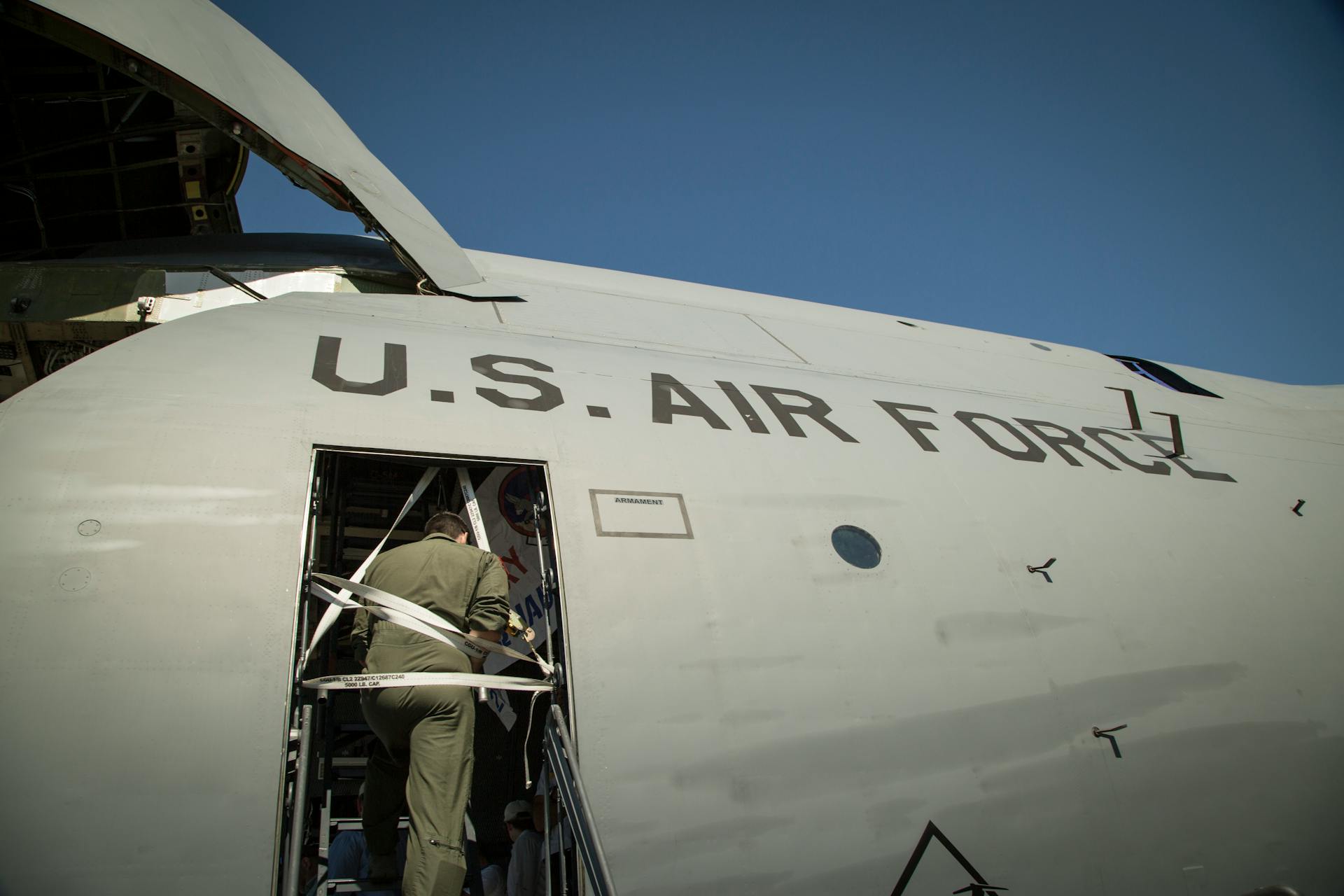
Here's a breakdown of the AWB number structure:
The AWB number is used to secure bookings and enable tracking of the status and location of the shipment.
The air waybill also includes special handling instructions, if any, such as refrigeration required, and the terms and conditions of the transportation contract.
House vs Master
House and Master are two distinct entities in the context of AWB (Air Waybill) details. The AWB is a document that serves as a contract of carriage between the shipper and the carrier.
A House is an agent or representative of the Master, responsible for handling the shipment and its related documentation. The Master, on the other hand, is the carrier's representative who signs the AWB and assumes responsibility for the shipment's safe transportation.
The House may not have the authority to make decisions on behalf of the Master, and their roles and responsibilities are clearly defined in the AWB. The Master, as the carrier's representative, is ultimately responsible for the shipment's delivery and any issues that may arise during transit.
In some cases, the House and Master may be the same entity, but this is not always the case. Understanding the distinction between these two entities is crucial for ensuring a smooth and efficient shipping process.
Worth a look: House Air Waybill
Details Within

An air waybill is a standardized one-page form that accompanies goods being shipped via airplane. It contains essential information pertinent to the movement of the intended cargo.
The shipper's name and address, recipient's name and address, and carrier's name and office address are all included on the air waybill. The description of goods being transported and their declared value are also crucial details.
The air waybill also includes the quantity, weight, and size of packaged goods, as well as the airport of departure and destination. Special handling instructions, such as refrigeration requirements, may also be specified.
The air waybill is a contract of carriage between the shipper and the carrier, and it's a legal agreement that becomes enforceable when both parties sign the document. This agreement includes terms and conditions of the transportation contract.
Here are the key details included on an air waybill:
- Shipper’s name and address
- Recipient’s name and address
- Carrier’s name and office address
- Description of goods being transported and their declared value
- Quantity, weight and size of packaged goods
- Airport of departure
- Airport of destination
- Special handling instructions, if any
- Terms and conditions of the transportation contract
The AWB number is used to secure bookings and enable tracking of the status and location of the shipment. It's a unique 11-digit number that's divided into three sections: the first three digits identify the carrier, the next seven digits make up the AWB's serial number, and the last digit is the check digit.
For another approach, see: Waybill Number
Validity

An air waybill (AWB) is a contract that's enforceable by law, and to become valid, it needs to be signed twice - once in the carrier box and once in the shipper box.
Both signatures can be of the same person, but the AWB must be issued immediately upon receipt of the goods and letter of instructions from the shipper.
The AWB is not valid unless it's dated and signed twice, and if it's not, the carrier won't accept responsibility for the goods.
The validity of the AWB and the contract of carriage expires upon delivery of the shipment to the consignee or their authorized agent.
Consider reading: International Air Transport Association Dangerous Goods Regulations
Electronic AWB
Electronic AWB is the digital counterpart to the traditional printed air waybill. It was approved and implemented by IATA in 2019.
The eAWB eliminates the need to print, handle, and archive paper air waybills, contributing to faster delivery times and decreased handling errors. This process saves time and money, and is also environmentally friendly by reducing paper usage.
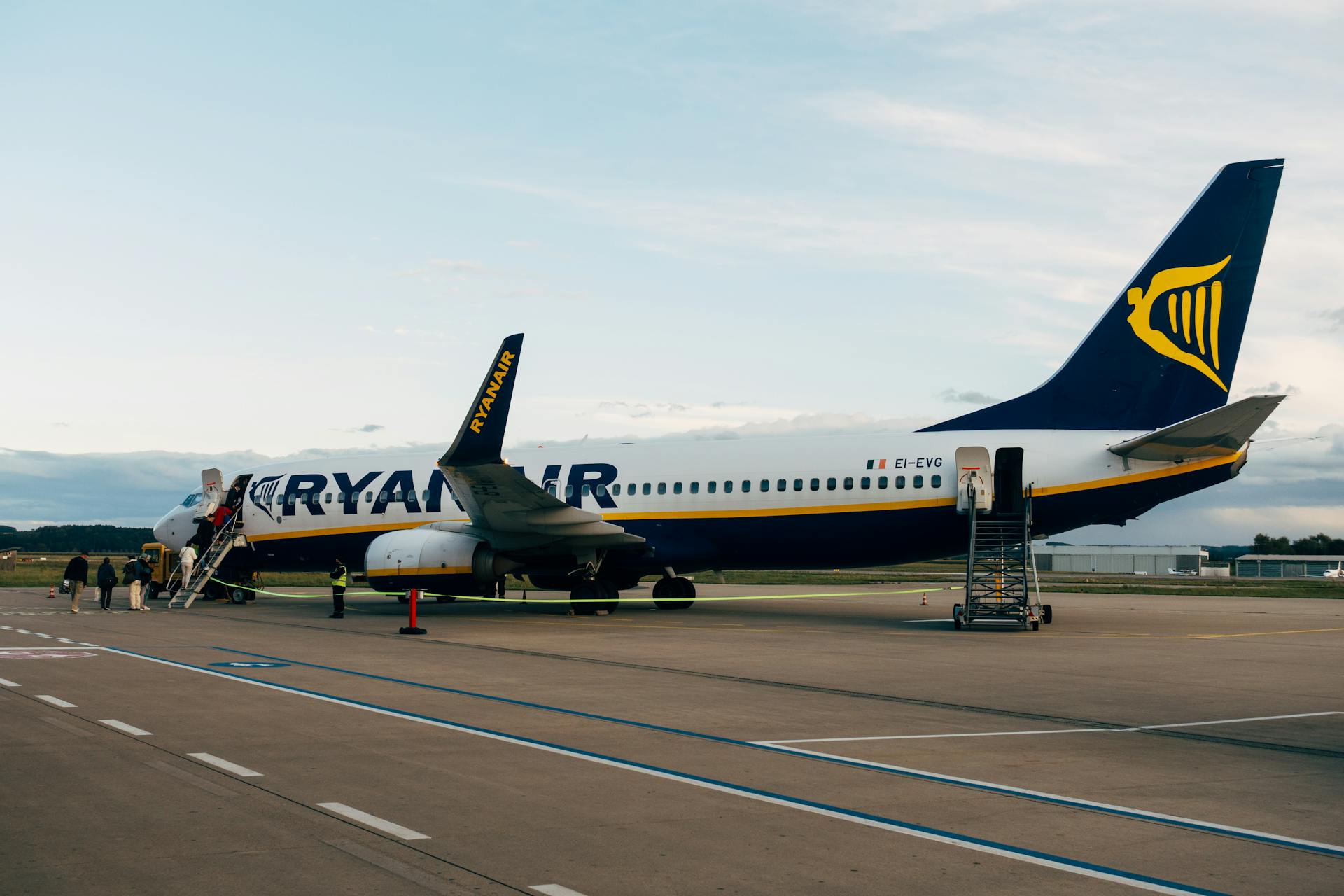
One limitation to the eAWB is that it cannot be accepted for shipments of dangerous goods or hazardous materials, which require paper documentation.
The e-AWB is now the default contract of carriage for all air cargo shipments on enabled trade lanes, bringing air cargo into a new era of digital processes. This milestone was achieved on 1 January 2019, nine years after the introduction of e-AWB in 2010.
Readers also liked: E Air Waybill
Electronic
Electronic air waybills (eAWBs) have revolutionized the way we handle cargo shipments. Approved by IATA in 2019, the eAWB eliminates the need to print, handle, and archive paper air waybills.
This digital alternative saves time and money, and it's also environmentally friendly by reducing paper usage. The eAWB process is faster and has fewer handling errors compared to traditional paper-based methods.
However, there's a limitation to the eAWB: it cannot be accepted for shipments of dangerous goods (DG) or hazardous materials. According to IATA regulations, these substances require paper documentation.

The eAWB is a game-changer for the air cargo industry, and it's not the only electronic solution being implemented. IATA Cargo-XML messaging is emerging as a preferred standard for electronic communication between airlines and other stakeholders.
This new standard facilitates cargo business processes, fulfills customs requirements for Advanced Cargo Information (ACI) filing, and complies with security regulations like e-CSD.
E-AWB Becomes Default Contract of Carriage
E-AWB became the default contract of carriage for all air cargo shipments on enabled trade lanes on 1 January 2019. This milestone marks a significant shift towards digital processes in the air cargo industry.
The IATA introduced e-AWB in 2010, and it took nine years for it to become the standard. This change brings air cargo into a new era where digital processes are now the norm and paper is the exception.
The e-AWB process eliminates the need to print, handle, and archive paper air waybills, saving time and money. It also contributes to faster delivery times and decreased handling errors.

The e-AWB implementation playbook, global SOP, and guidelines on best practice are available for download, making it easier for companies to roll out the e-AWB system.
The e-AWB is a legal agreement that becomes enforceable when the shipper and carrier both sign the document. It serves as a receipt of goods and a contract of carriage between the shipper and the carrier.
The IATA Cargo-XML messaging is emerging as a preferred standard for electronic communication between airlines and other air cargo stakeholders. This new standard aims to facilitate cargo business processes and fulfill customs requirements for Advanced Cargo Information (ACI) filing.
Here are the key dates related to e-AWB:
AWB Management
AWB numbers are managed by the International Air Transport Association, which produces and distributes them with specific requirements in place.
These requirements include the inclusion of the airline's name, headquarters, logo, and unique waybill number.
To track packages sent as registered mail, you can use Ship24, which has helped thousands of individuals and businesses track millions of parcels worldwide.
For those interested in starting their e-AWB rollout, there are downloadable resources available, including the e-AWB implementation playbook, latest e-AWB Global SOP, and guidelines on best practice.
AWB Number Management
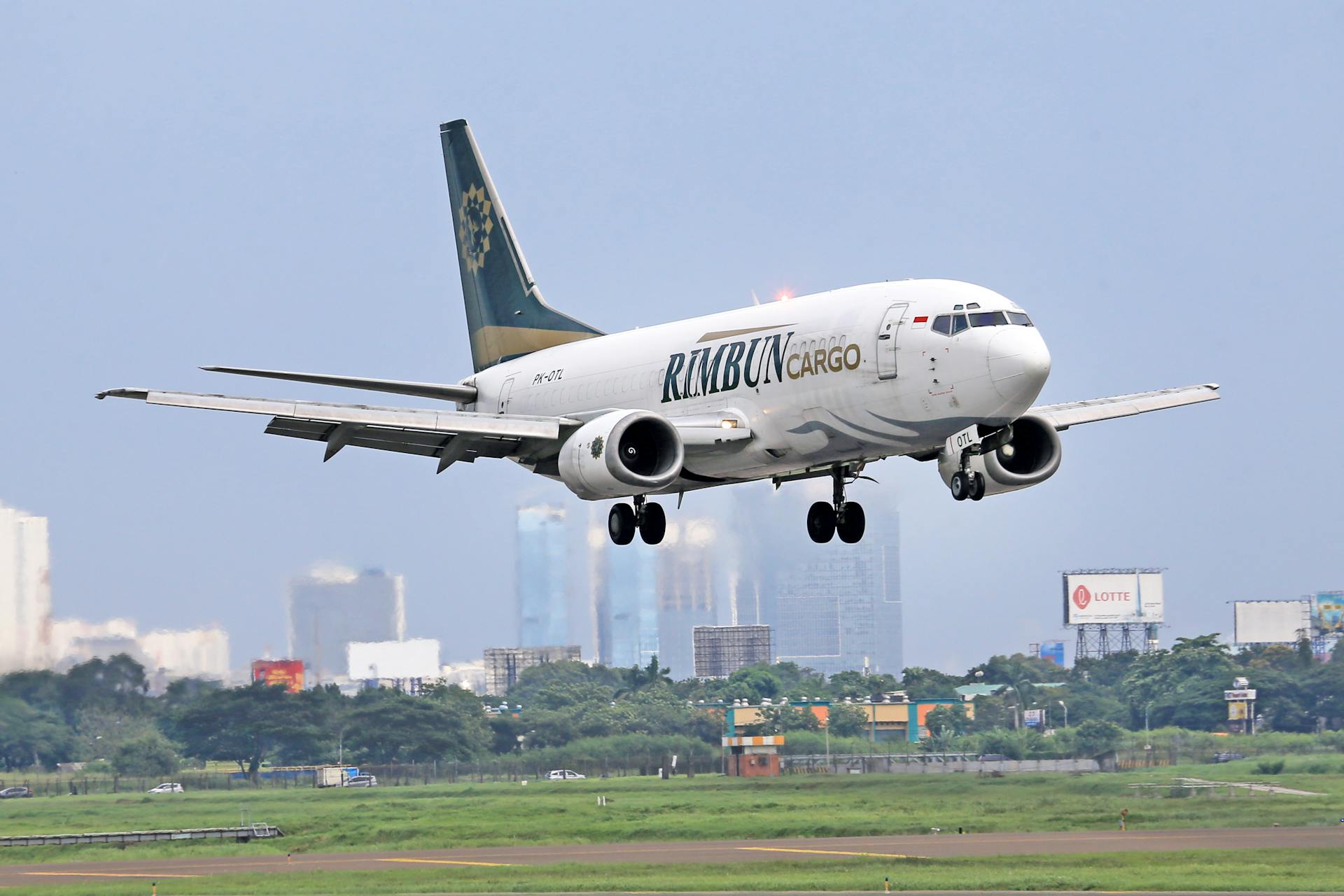
The International Air Transport Association is responsible for producing and distributing AWB numbers.
To get an AWB number, you'll need to include the airline's name, headquarters, logo, and a specific unique waybill number.
AWBs are used to track packages as they're in transit, and they're often used in conjunction with bills of lading.
Ship24 is a service that allows you to track packages, including registered mail, and has helped thousands of individuals and businesses track millions of parcels worldwide.
You can track packages individually through Ship24's main page or with their professional tracking API and premium tracking webhook functionality.
Starting e-AWB Roll Out?
Starting e-AWB Roll Out? e-AWB became the default contract of carriage on January 1, 2019, marking a new era for air cargo where digital processes are the norm.
If you're interested in starting your e-AWB roll out, you can download the new e-AWB implementation playbook, the latest e-AWB Global SOP, and guidelines on best practice. These resources will provide you with the necessary information to get started.
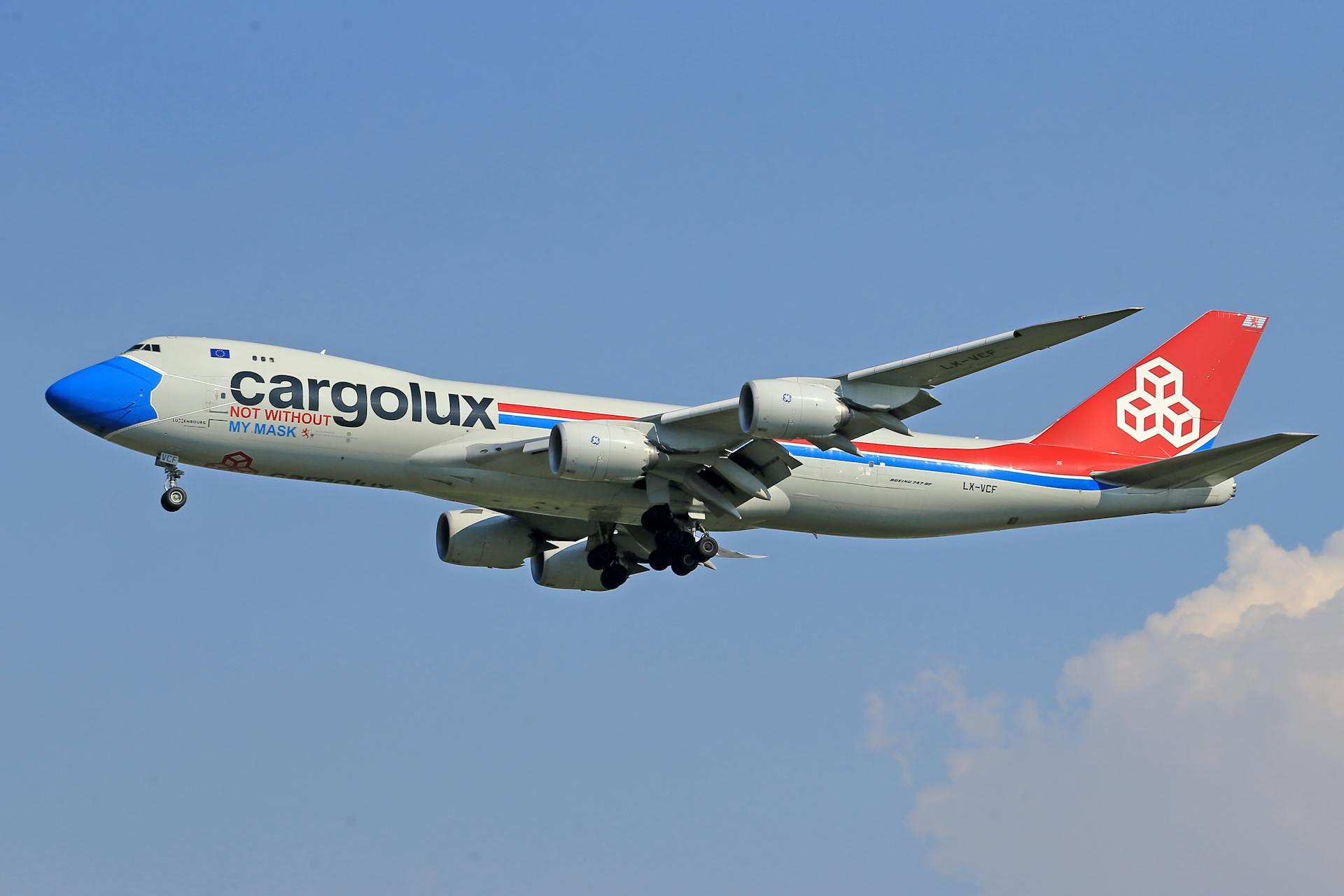
The e-AWB implementation playbook is a valuable tool that will guide you through the process of rolling out e-AWB in your organization. The latest e-AWB Global SOP outlines the standard operating procedures for e-AWB, ensuring consistency and efficiency across the industry.
You can download the e-AWB implementation playbook, the latest e-AWB Global SOP, and guidelines on best practice from the provided links.
Revision Requirements
To revise an air waybill, you need to understand the requirements. The International Air Transport Association (IATA) designs and distributes air waybills.
Each airline-specific air waybill must include the carrier's name, head office address, logo, and air waybill number. This is a non-negotiable requirement.
Neutral air waybills follow the same layout and format as airline AWBs, but they aren't prepopulated. This means you'll need to fill in the necessary information yourself.
Worth a look: Cargo Airline
Designated Contact
Your company needs a designated contact to handle matters related to the multilateral e-AWB agreement. This person will be the primary point of contact for airlines and IATA.
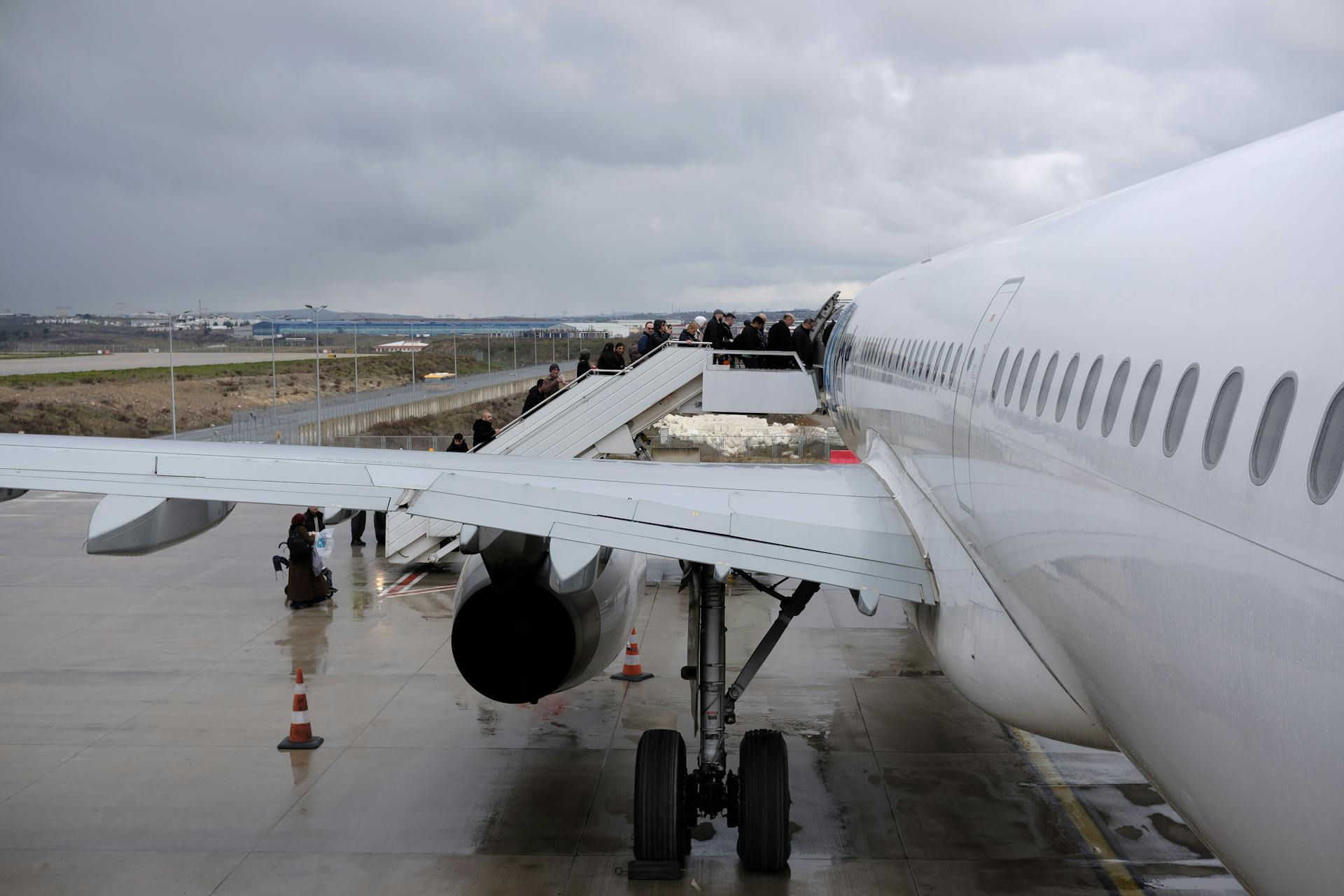
A designated contact can be added or changed after joining the IATA Multilateral e-AWB Agreement. This can be done using IATA's automated self-service tool, which features online forms and an integrated e-sign process.
You can add new designated contacts or change currently registered ones using this tool. It's a convenient way to manage your company's representatives without needing to contact IATA directly.
Here are some actions you can take with designated contacts:
- Add designated contact
- Change designated contact
These actions will help you stay on top of communication with airlines and IATA, ensuring that your company receives important notices and information on time.
Cargo-XML Autocheck Tool
The Cargo-XML AutoCheck Tool is a valuable resource for air cargo industry stakeholders.
IATA offers this tool for free to help validate Cargo-XML messages.
It's a game-changer for those implementing the Cargo-XML standards, allowing them to ensure their messages are correct and error-free.
By using the Cargo-XML AutoCheck Tool, stakeholders can save time and reduce errors in their Cargo-XML messages.
IATA is committed to fostering industry adoption of Cargo-XML standards, and this tool is a key part of that effort.
This tool is a must-have for anyone working with Cargo-XML messages, as it provides a quick and easy way to check for errors and inconsistencies.
Benefits and Support
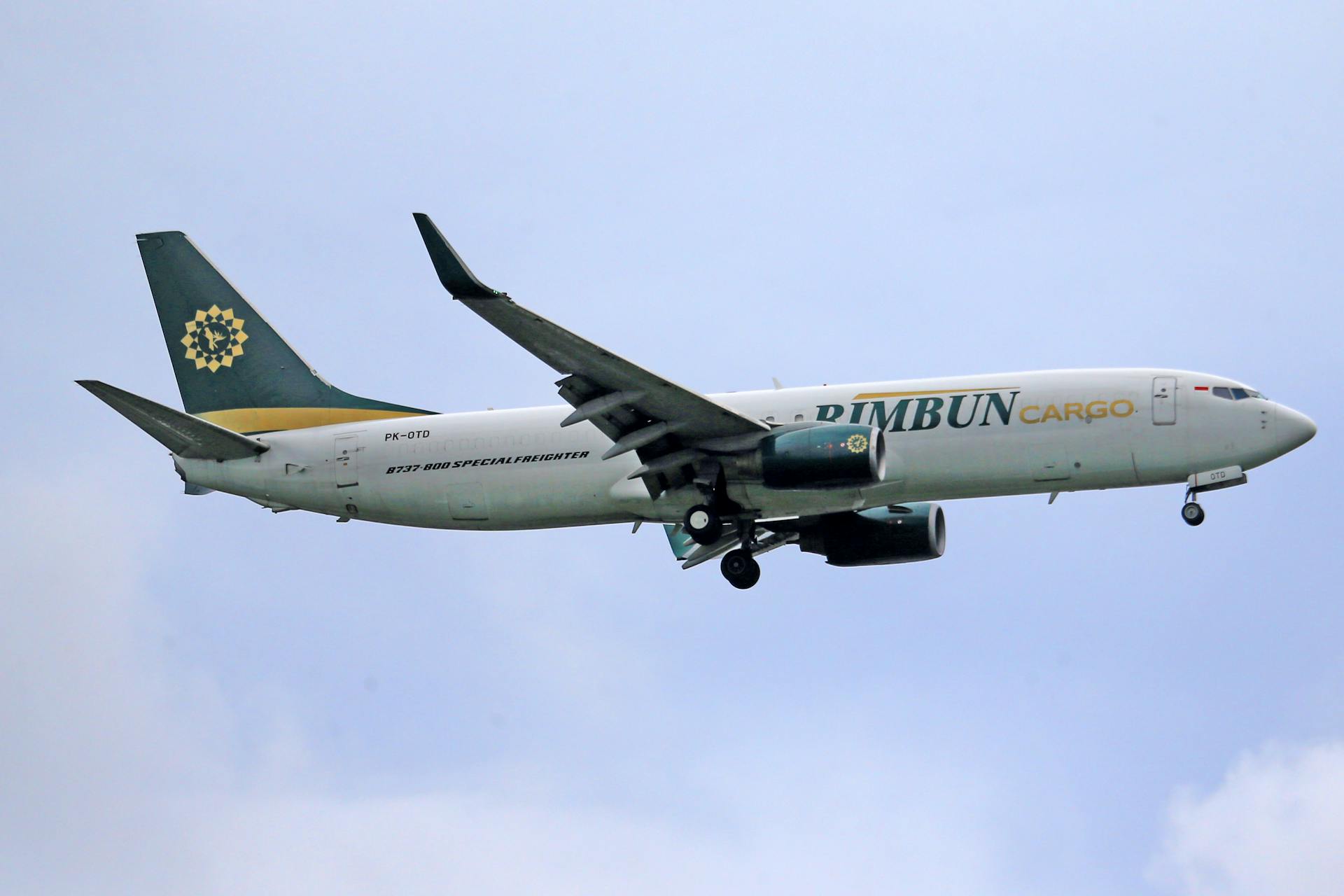
Having access to the e-freight and e-AWB system allows you to instantly retrieve customized reports with an increased level of data accuracy.
With the system, data is available to all stakeholders as soon as it is entered, increasing the timeliness of information.
This means you can rely on the most up-to-date information, reducing the need for manual updates and potential errors.
By maintaining your own data and populating your implementation plans directly in the live system, you have the power to control your own progress.
Here are some key benefits of using the e-freight and e-AWB system:
- Increases visibility: access to live locations, airports, airlines, freight forwarders, and ground handling agents
- Increases timeliness of information: data is available as soon as it is entered
- Increases data accuracy and time savings: customized reports with updated data
- Puts power in your own hands: maintain your own data and populate implementation plans
- Connects you with your partners: messaging system for joint implementation
Objectives and Benefits
The e-freight and e-AWB system offers numerous benefits to its participants.
One of the key advantages is that it increases visibility, allowing users to access information on live locations, airports, airlines, freight forwarders, and ground handling agents with just a click of a mouse.
This system also increases the timeliness of information, making data available to all stakeholders as soon as it is entered by the relevant parties.

The accuracy of data is also significantly improved, as users can instantly retrieve customized reports.
By maintaining their own data and populating their implementation plans directly in the live system, e-freight and e-AWB participants have the power in their own hands.
The system also connects users with their partners, encouraging stakeholders to communicate with each other via the incorporated messaging system.
Here are the main benefits of the e-freight and e-AWB system at a glance:
- Increases visibility
- Increases timeliness of information
- Increases data accuracy and time savings
- Puts power in your own hands
- Connects you with your partners
Industry Associations Supporting e-AWB Agreement
Industry associations from around the world have confirmed their support for the multilateral e-AWB agreement.
These associations have recognized the benefits of electronic air waybills and are working together to make the transition to e-AWB a success.
Industry associations supporting the multilateral e-AWB agreement include those from various countries and regions, highlighting the global nature of this initiative.
The fact that so many industry associations are on board demonstrates the widespread acceptance and endorsement of the e-AWB agreement.
These industry associations have published their support for the multilateral e-AWB agreement in the form of pdf documents, which are available for reference.
Key Information
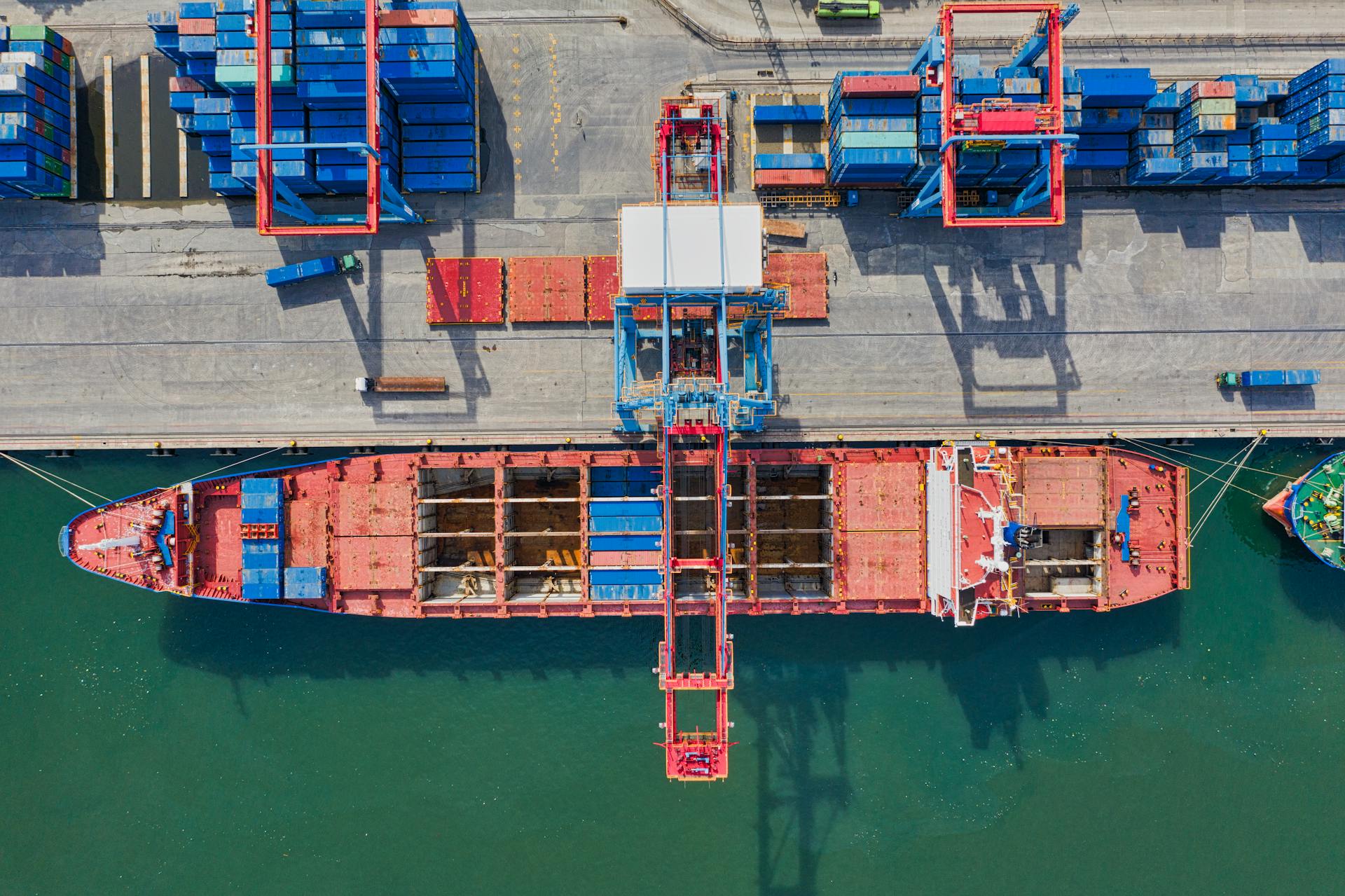
An international air waybill is a document that accompanies a shipment of goods as it travels from one country to another. It's essentially a contract between the shipper and the airline.
The waybill contains important details about the shipment, including the shipper's and consignee's names and addresses, as well as the type and quantity of goods being transported.
The airline must sign the waybill upon receipt of the shipment, acknowledging that they have taken custody of the goods.
The waybill must include a unique waybill number, which is used to track the shipment's progress.
The waybill also includes a description of the goods being transported, including their weight and dimensions.
Where Do I Obtain?
To obtain an international air waybill, you can start by visiting the International Air Transport Association (IATA) website. They provide a standard agreement for e-AWBs that you can access online.
Most carriers, including FedEx, offer the convenience of creating e-AWBs online. FedEx, for example, allows you to create your air waybill online through their website.
You might like: Fedex Air Cargo
If you're looking for more information, you can check out the IATA website for their e-AWB resources. They also have a document titled "e-AWB" that provides more details on the process.
Here are some resources to help you get started:
- FedEx. "Create Your Air Waybill Online."
- International Air Transport Association. "e-AWB."
- International Air Transport Association. "Resolution 672-Form of Multilateral E-Air Waybill Agreement."
Featured Images: pexels.com


